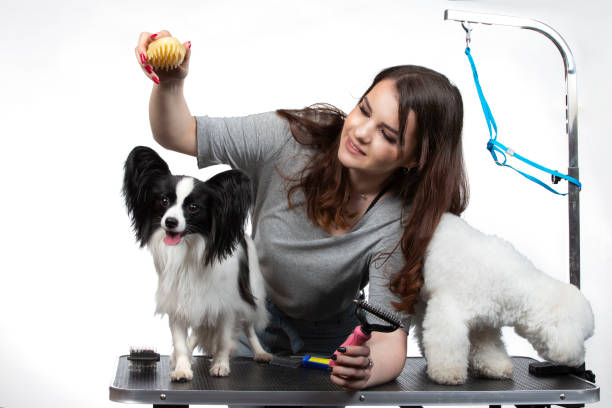Effective Pet Training
Successful Pet Training Tips for Fast and Lasting Results
Training your pet effectively requires patience, consistency, and the right techniques. Whether you’re training a new puppy, a rescue dog, or even a cat, the goal is to foster a positive relationship while achieving practical results. Here’s a guide to successful pet training tips that can help you achieve fast and lasting results.
1. Start Early and Be Consistent
Early Training: Begin training your pet as early as possible. Puppies and kittens are more receptive to learning new behaviors and commands, making early training beneficial.
Consistency is Key: Use the same commands and gestures consistently. Inconsistencies can confuse your pet and slow down the training process. Ensure everyone in your household uses the same commands and methods.
Key Tips:
- Establish a Routine: Schedule regular training sessions to build a habit.
- Reinforce Consistency: Repeat commands and actions consistently.
2. Use Positive Reinforcement
Reward-Based Training: Positive reinforcement involves rewarding your pet for desired behaviors. This can include treats, praise, or playtime. Rewards encourage pets to repeat the behavior.
Types of Rewards:
- Treats: Use small, tasty treats that your pet loves.
- Praise: Offer enthusiastic verbal praise and petting.
- Play: Incorporate favorite toys into training sessions.
Key Tips:
- Immediate Rewards: Reward your pet immediately after the desired behavior to create a clear connection.
- Variety: Mix up rewards to keep training engaging.
3. Set Clear and Achievable Goals
Break Down Tasks: Divide training into small, manageable tasks. Instead of overwhelming your pet with complex commands, start with simple commands and gradually progress.
Short Sessions: Keep training sessions short and focused, especially for young pets or those new to training. Aim for 5-10 minutes per session, several times a day.
Key Tips:
- Progress Gradually: Build on each successful behavior before introducing new commands.
- Patience: Understand that some behaviors take time to master.
4. Incorporate Training into Daily Life
Everyday Opportunities: Use everyday situations as training opportunities. For instance, practice commands during walks or meal times.
Consistency in Environment: Ensure that training is integrated into your pet’s daily routine. Consistent environments and contexts help reinforce learning.
Key Tips:
- Routine Practice: Include commands like “sit” or “stay” during daily activities.
- Positive Experiences: Associate training with positive experiences to maintain motivation.
5. Address Behavioral Issues Early
Identify Triggers: Recognize and address behavioral issues early. Ignoring problems can lead to more serious issues later on.
Professional Help: Seek professional help if needed. Certified pet trainers or behaviorists can provide guidance for complex or persistent issues.
Key Tips:
- Immediate Correction: Address unwanted behaviors as soon as they occur.
- Positive Approaches: Avoid punishment-based methods; focus on redirecting and rewarding positive behaviors.
6. Make Training Fun and Engaging
Interactive Training: Incorporate games and interactive elements into training. Use toys, agility equipment, or puzzles to make sessions more stimulating.
Variety in Training: Mix up training exercises to keep your pet engaged and interested. Repetition can become monotonous, so variety helps maintain enthusiasm.
Key Tips:
- Enriching Environment: Use different environments and stimuli to make training enjoyable.
- Celebration: Celebrate progress with excitement and affection.
7. Be Patient and Avoid Overtraining
Patience is Crucial: Training takes time, and progress may be slow. Avoid frustration and be patient with your pet’s learning curve.
Avoid Overtraining: Overtraining can lead to frustration and burnout for both you and your pet. Allow time for relaxation and play.
Key Tips:
- Positive Attitude: Maintain a positive and encouraging attitude during training.
- Balanced Sessions: Balance training with play and relaxation to keep sessions enjoyable.
8. Reinforce Good Behavior and Avoid Negative Reinforcement
Focus on Positives: Reinforce good behavior rather than focusing on negative actions. Encourage and reward positive behaviors to build a trusting relationship.
Avoid Negative Reinforcement: Negative reinforcement or punishment can damage your pet’s trust and lead to anxiety. Instead, use redirection and positive reinforcement to guide behavior.
Key Tips:
- Positive Reinforcement: Continually use rewards and praise to reinforce desired behaviors.
- Redirection: Redirect unwanted behaviors to more appropriate actions.
9. Educate Yourself and Stay Informed
Ongoing Learning: Stay informed about the latest training techniques and behavioral science. Educate yourself through books, online resources, or workshops.
Adapt Techniques: Be open to adapting new techniques and approaches that may better suit your pet’s needs.
Key Tips:
- Stay Updated: Follow reputable sources for new training methods and insights.
- Seek Advice: Consult with professionals if you encounter challenges.
10. Build a Strong Bond
Positive Relationship: Training is an opportunity to strengthen your bond with your pet. Building trust and positive interactions will improve training outcomes and your pet’s overall well-being.
Engagement and Affection: Spend quality time with your pet outside of training to reinforce your connection and maintain a positive relationship.
Key Tips:
- Engage Regularly: Engage with your pet in various activities beyond training.
- Show Affection: Use affection and praise to strengthen your bond.
Conclusion
Successful pet training combines consistency, patience, and positive reinforcement. By setting clear goals, incorporating training into daily routines, and addressing behavioral issues early, you can achieve fast and lasting results. Making training enjoyable and engaging for your pet, while continuously educating yourself, will ensure a positive and effective training experience. Ultimately, a well-trained pet is a happy and confident companion, contributing to a harmonious and enjoyable relationship.

